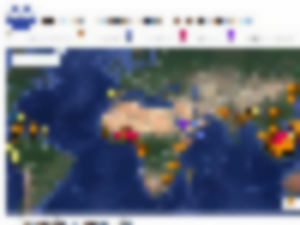Economist sees East, Gulf coasts served by Cuba, Nova Scotia transshipment hubs
The U.S. East and Gulf coasts can expect to be significantly served by a pair of transshipment hubs – ideally in Cuba and Canada’s province of Nova Scotia – a leading port industry economist said today.
SMC3 attracts more than 500 to Atlanta for Jump Start 2017 logistics conference
Hitting a proverbial grand slam with more than 500 participants, SMC3 has once again provided ample opportunity for supply chain executives and technology providers to learn the latest about the logistics industry and, of course, to mix and mingle.
Port of Long Beach predicts “modest growth” in 2017
The Port of Long Beach expects “modest growth” in 2017 after experiencing a 5.8% decline in overall container cargo in 2016, according to interim Chief Executive Duane Kenagy.
Rail, trucking see cautiously optimistic 2017 outlook, say CSX, ODFL leaders
Rail and trucking sectors can be guardedly enthusiastic this year as Donald Trump assumes the presidency, a pair of industry leaders said today [Jan. 23].
Civilization Ends at the Waterline: 2016 IMB Piracy Report
“It was the Law of the Sea, they said. Civilization ends at the waterline. Beyond that, we all enter the food chain, and not always on top.”
Hunter S. Thompson, Generation of Swine: Tales of Shame and Degradation in the ‘80s.
Lytle Hails Port of Oakland’s 2016 Turnaround
Port of Oakland executive director Chris Lytle said in his “State of the Port” address that “we are on a roll” as the Port racked up 2.37 million twenty foot containers in 2016, a 4% increase from 2015.
Welcome to the Revolution
On 22nd of December, 2016, Maersk, arguably the world’s largest ocean containership carrier (the argument coming from similar-sized 2M alliance partner MSC [Mediterranean Shipping Company]), began offering Chinese shippers the option of using Alibaba’s (arguably the world’s largest retail commerce company in gross revenue terms) OneTouch system. This move could well be as revolutionary as Malcom McLean’s launch of the containership industry just over sixty years ago.
The most promising markets of 2017: What’s hot, what’s not and how to stomach the risk in between
With 2016 properly packed away with the ribbons and glitter of the holidays, it’s time to face 2017, where new world leaders, political volatility and Mother Nature’s influence all promise to play influential roles. While the outlook for Emerging Market Economies (EME) going into 2017 is stable, uncertainty is on the increase with challenges stemming from the strong U.S. dollar and prospects for higher interest rates in advanced markets.
Asia Risk Assessment 2017
Steve Vickers, the CEO of the Hong Kong-based consultancy company, has a hard-earned reputation for being one of the keenest observers of political and economic developments in the region.
Port of Montreal sets new cargo record
The Port of Montreal has continued its upward momentum, setting a new record for total cargo in 2016 and coming within 1% of matching its container record of nearly 1.5 million TEU in 2015.
© Copyright 1999–2025 American Journal of Transportation. All Rights Reserved











